Schedule
Brinjal Crop Schedule
| Product Name | Fertilizers | |||||||||
|---|---|---|---|---|---|---|---|---|---|---|
| PROM/ Organic Fertilizer |
Poornima Kit | NPK Grow Caps |
Humigrow Nano Powder |
Alp | Sonha-Bihan | Amavasya Kit | IBP-Kit | |||
| Humic Acid | Chelated Multi-micronutrient |
PGP/PGR | ||||||||
| Land Reparation | week -1 | |||||||||
| Soil Treatment | week 0 | 1 Kit | ||||||||
| Transplantation | week 1 | 50kg | ||||||||
| Vegetative Growth | week 2 | 1 Kit | ||||||||
| week 3 | ||||||||||
| week 4 | ||||||||||
| week 5 | 2 Caps | 120gm | ||||||||
| week 6 | ||||||||||
| week 7 | ||||||||||
| week 8 | ||||||||||
| week 9 | 1 Kit | |||||||||
| Harvesting Flowering/ Fruiting/ |
week 10 | 50kg | 250gm | 250gm | ||||||
| week 11 | ||||||||||
| week 12 | 1 Kit | |||||||||
| week 13 | 2 Caps | 120gm | ||||||||
| week 14 | 250gm | 250gm | ||||||||
| week 15 | ||||||||||
| week 16 | ||||||||||
| week 17 | 1 Kit | |||||||||
| week 18 | ||||||||||
| week 19 | ||||||||||
| week 20 | ||||||||||
| Further will be repeated deepnding on the crop health, and weather conditions | ||||||||||
| Total Quantity | 100 kg | 3 Kit | 4 Caps | 240gm | 500gm | 500gm | 1 Kit | 1 Kit | ||
| Broadcast | |
| Top Dressing | |
| Basal Dressing | |
| Soil Application | |
| Spray | |
| * | Optional |
NOTE: For the first year donot immidietaly substitute 100% chemical fertilizer with the SIESTO GREEN products, as the soil is used to chemical fertilizer, it may affect the output. So the best way to substitute is by reducing 50% of chemical input in the first year, 25% the following 2nd year, & then another 10% by the 3rd year. After the 3rd year use synthetic fertilizer / inorganic fertilizer if their is a requirement depending on the soil health.
CROP SCHEDULE FOR BRINJAL (EGGPLANT)
Sr. No.
Treatment / Application
Product
Dose / Acre
APPLICATION
Management
1
Vegetative – Dissolve in 20 to 200 ltr. of water as required for 1 acre of land and apply through Drip Irrigation or drench.
POORNIMA KIT
1 KIT
Apply after transplantation that is week 2, week 9, and week 17.
It is a balanced form of nutrients that includes NPK, Zinc, Cropforce NP, Humigrow NP, and Mycorrhiza NP
2
Vegetative – Mix all with the required amount of water and apply through drip irrigation, flood irrigation, or drenching as per farmer’s availability.
NPK + Humigrow
2 Caps + 120gm
Apply it in week 6, week 13, and week 21.
It is a balanced form of Nutrition that includes NPK.
3
Flowering/ Fruiting – Mix both in 20 – 200 liters of water as per requirement and spray it in the plants.
ALP + Sonhabihan
250gm + 250gm/ 200 lit. of water
Apply it in week 10 (When flowerings are seen) and week 18.
It is a Micronutrient and PGP that helps in Growth, Fruit set, and the quality of the produce.
PEST ATTACKS, BACTERIAL, OR FUNGAL MANAGEMENT
PEST / BACTERIAL / FUNGAL
IDENTIFICATION IN CROP
SYMPTOMS
SUGGESTED PRODUCT
Shoot & Fruit Borer
 This pest created serious damage to the leaves, flower buds, and fruits.
Traps + Meta + BT
Jassids
This pest created serious damage to the leaves, flower buds, and fruits.
Traps + Meta + BT
Jassids
 The nymphs and adults will suck the sap of the leaves. The affected leaf will curl upward along the margins and turn yellow color with burnt-up patches.
Lifeline
Mites
The nymphs and adults will suck the sap of the leaves. The affected leaf will curl upward along the margins and turn yellow color with burnt-up patches.
Lifeline
Mites
 Most common pests of brinjal plants. This is infected due to low humidity levels. Nymphs and adults will suck sap and form white patches on the leaves.
Lifeline + Traps + Meta + BT
Mealy Bug
Most common pests of brinjal plants. This is infected due to low humidity levels. Nymphs and adults will suck sap and form white patches on the leaves.
Lifeline + Traps + Meta + BT
Mealy Bug
 Nymphs and adults will suck sap from the leaves, tender shoots, and fruits.
Traps + Meta
Root-knot Nematode
Nymphs and adults will suck sap from the leaves, tender shoots, and fruits.
Traps + Meta
Root-knot Nematode
 This pest will cause more severe damage to seedlings than the older plants. The affected plants will develop galls on the roots.
Meta + BT + Pacliq
Damping-off
This pest will cause more severe damage to seedlings than the older plants. The affected plants will develop galls on the roots.
Meta + BT + Pacliq
Damping-off
 This disease causes severe damage to the plants. The main cause of this disease is high soil, moisture, and moderate temperature with high humidity levels during the rainy season.
Indofa + Bacillus
Leaf spot
This disease causes severe damage to the plants. The main cause of this disease is high soil, moisture, and moderate temperature with high humidity levels during the rainy season.
Indofa + Bacillus
Leaf spot
 The disease symptoms are chlorotic lesions in angular to irregular shapes, later the lesion turns grayish-brown.
Indofa
Fruit Rot
The disease symptoms are chlorotic lesions in angular to irregular shapes, later the lesion turns grayish-brown.
Indofa
Fruit Rot
 High humidity is the main cause of this disease. The symptoms of the disease are water-soaked lesions on the fruit, which later enlarges.
Indofa + Bacillus
Wilt
High humidity is the main cause of this disease. The symptoms of the disease are water-soaked lesions on the fruit, which later enlarges.
Indofa + Bacillus
Wilt
 This disease will infect young plants and mature plants. The infected young plants show dwarfing and stunting.
Indofa + Bacillus + BT + Lifeline
Powdery
This disease will infect young plants and mature plants. The infected young plants show dwarfing and stunting.
Indofa + Bacillus + BT + Lifeline
Powdery
 The leaves show white, powdery spots that enlarge to cover the entire leaf.
Lifeline + Indofa + BT + Bacillus
Anthracnose
The leaves show white, powdery spots that enlarge to cover the entire leaf.
Lifeline + Indofa + BT + Bacillus
Anthracnose
 Multiple infections are common. The spots darken, expand along the length of the fruit, and merge forming large brown slightly raised warty patches, especially at the base of the fruits.
Indofa + Bacillus
Leafminer
Multiple infections are common. The spots darken, expand along the length of the fruit, and merge forming large brown slightly raised warty patches, especially at the base of the fruits.
Indofa + Bacillus
Leafminer
 Leafminers are small insects that tunnel through the leaves of plants. The tunnels appear as white or brown squiggly lines on the leaves.
Lifeline + Traps + Meta + BT
Leafminers are small insects that tunnel through the leaves of plants. The tunnels appear as white or brown squiggly lines on the leaves.
Lifeline + Traps + Meta + BT
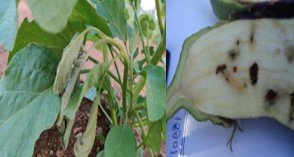 This pest created serious damage to the leaves, flower buds, and fruits.
Traps + Meta + BT
Jassids
This pest created serious damage to the leaves, flower buds, and fruits.
Traps + Meta + BT
Jassids
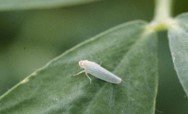 The nymphs and adults will suck the sap of the leaves. The affected leaf will curl upward along the margins and turn yellow color with burnt-up patches.
Lifeline
Mites
The nymphs and adults will suck the sap of the leaves. The affected leaf will curl upward along the margins and turn yellow color with burnt-up patches.
Lifeline
Mites
 Most common pests of brinjal plants. This is infected due to low humidity levels. Nymphs and adults will suck sap and form white patches on the leaves.
Lifeline + Traps + Meta + BT
Mealy Bug
Most common pests of brinjal plants. This is infected due to low humidity levels. Nymphs and adults will suck sap and form white patches on the leaves.
Lifeline + Traps + Meta + BT
Mealy Bug
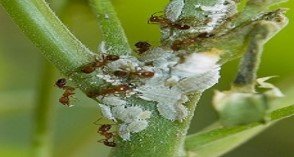 Nymphs and adults will suck sap from the leaves, tender shoots, and fruits.
Traps + Meta
Root-knot Nematode
Nymphs and adults will suck sap from the leaves, tender shoots, and fruits.
Traps + Meta
Root-knot Nematode
 This pest will cause more severe damage to seedlings than the older plants. The affected plants will develop galls on the roots.
Meta + BT + Pacliq
Damping-off
This pest will cause more severe damage to seedlings than the older plants. The affected plants will develop galls on the roots.
Meta + BT + Pacliq
Damping-off
 This disease causes severe damage to the plants. The main cause of this disease is high soil, moisture, and moderate temperature with high humidity levels during the rainy season.
Indofa + Bacillus
Leaf spot
This disease causes severe damage to the plants. The main cause of this disease is high soil, moisture, and moderate temperature with high humidity levels during the rainy season.
Indofa + Bacillus
Leaf spot
 The disease symptoms are chlorotic lesions in angular to irregular shapes, later the lesion turns grayish-brown.
Indofa
Fruit Rot
The disease symptoms are chlorotic lesions in angular to irregular shapes, later the lesion turns grayish-brown.
Indofa
Fruit Rot
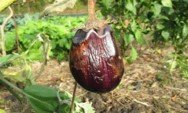 High humidity is the main cause of this disease. The symptoms of the disease are water-soaked lesions on the fruit, which later enlarges.
Indofa + Bacillus
Wilt
High humidity is the main cause of this disease. The symptoms of the disease are water-soaked lesions on the fruit, which later enlarges.
Indofa + Bacillus
Wilt
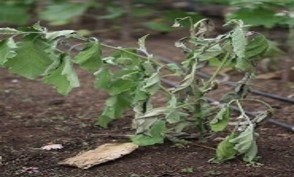 This disease will infect young plants and mature plants. The infected young plants show dwarfing and stunting.
Indofa + Bacillus + BT + Lifeline
Powdery
This disease will infect young plants and mature plants. The infected young plants show dwarfing and stunting.
Indofa + Bacillus + BT + Lifeline
Powdery
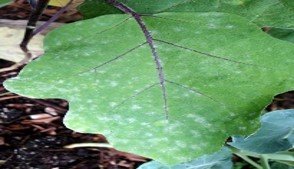 The leaves show white, powdery spots that enlarge to cover the entire leaf.
Lifeline + Indofa + BT + Bacillus
Anthracnose
The leaves show white, powdery spots that enlarge to cover the entire leaf.
Lifeline + Indofa + BT + Bacillus
Anthracnose
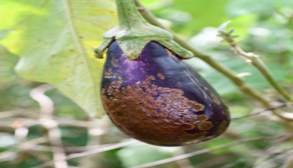 Multiple infections are common. The spots darken, expand along the length of the fruit, and merge forming large brown slightly raised warty patches, especially at the base of the fruits.
Indofa + Bacillus
Leafminer
Multiple infections are common. The spots darken, expand along the length of the fruit, and merge forming large brown slightly raised warty patches, especially at the base of the fruits.
Indofa + Bacillus
Leafminer
 Leafminers are small insects that tunnel through the leaves of plants. The tunnels appear as white or brown squiggly lines on the leaves.
Lifeline + Traps + Meta + BT
Leafminers are small insects that tunnel through the leaves of plants. The tunnels appear as white or brown squiggly lines on the leaves.
Lifeline + Traps + Meta + BT
NUTRITION DEFICIENCY
Nutrient
Identification
Symptoms
Suggested Product
Nitrogen
 The whole plant looks pale to yellowish green, with early senescence of older leaves, increased root growth, and stunted shoot growth resulting in a low shoot/root ratio.
Azoss Caps
Phosphorus
The whole plant looks pale to yellowish green, with early senescence of older leaves, increased root growth, and stunted shoot growth resulting in a low shoot/root ratio.
Azoss Caps
Phosphorus
 Leaves turn dark, dull, blue-green, and may become pale in severe deficiency. Reddish, reddish-violet, or violet color develops from increased anthocyanin synthesis. Symptoms appear first on older parts of the plant.
PSB Plus Caps
Potassium
Leaves turn dark, dull, blue-green, and may become pale in severe deficiency. Reddish, reddish-violet, or violet color develops from increased anthocyanin synthesis. Symptoms appear first on older parts of the plant.
PSB Plus Caps
Potassium
 The leaves turn yellow and brown, and the edges of the leaves may become scorched. The plant may also have stunted growth and produce small fruit.
Potash Grow Caps
Zinc
The leaves turn yellow and brown, and the edges of the leaves may become scorched. The plant may also have stunted growth and produce small fruit.
Potash Grow Caps
Zinc
 Zinc deficiency in eggplant can cause the leaves to become smaller and distorted. The leaves may also develop chlorosis, which is a yellowing of the tissue between the veins.
Zinc Grow Caps
Sulphur
Zinc deficiency in eggplant can cause the leaves to become smaller and distorted. The leaves may also develop chlorosis, which is a yellowing of the tissue between the veins.
Zinc Grow Caps
Sulphur
 The leaves become yellow and the veins remain green. The leaves may also become brittle and curl up at the edges.
Sulphur Caps
Manganese
The leaves become yellow and the veins remain green. The leaves may also become brittle and curl up at the edges.
Sulphur Caps
Manganese
 The veins of middle to upper leaves of manganese-deficient plants appear green against the mottled pale green to yellow of the blade.
ALP
Copper
The veins of middle to upper leaves of manganese-deficient plants appear green against the mottled pale green to yellow of the blade.
ALP
Copper
 Copper deficiency in eggplant can result in stunted growth, discoloration of leaves and flowers, decreased crop yields, weakness in stems and roots, and chlorosis.
ALP
Copper deficiency in eggplant can result in stunted growth, discoloration of leaves and flowers, decreased crop yields, weakness in stems and roots, and chlorosis.
ALP
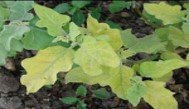 The whole plant looks pale to yellowish green, with early senescence of older leaves, increased root growth, and stunted shoot growth resulting in a low shoot/root ratio.
Azoss Caps
Phosphorus
The whole plant looks pale to yellowish green, with early senescence of older leaves, increased root growth, and stunted shoot growth resulting in a low shoot/root ratio.
Azoss Caps
Phosphorus
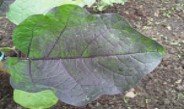 Leaves turn dark, dull, blue-green, and may become pale in severe deficiency. Reddish, reddish-violet, or violet color develops from increased anthocyanin synthesis. Symptoms appear first on older parts of the plant.
PSB Plus Caps
Potassium
Leaves turn dark, dull, blue-green, and may become pale in severe deficiency. Reddish, reddish-violet, or violet color develops from increased anthocyanin synthesis. Symptoms appear first on older parts of the plant.
PSB Plus Caps
Potassium
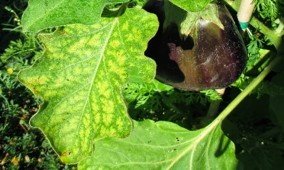 The leaves turn yellow and brown, and the edges of the leaves may become scorched. The plant may also have stunted growth and produce small fruit.
Potash Grow Caps
Zinc
The leaves turn yellow and brown, and the edges of the leaves may become scorched. The plant may also have stunted growth and produce small fruit.
Potash Grow Caps
Zinc
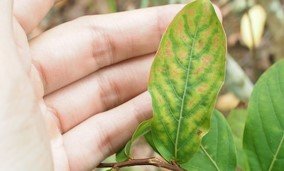 Zinc deficiency in eggplant can cause the leaves to become smaller and distorted. The leaves may also develop chlorosis, which is a yellowing of the tissue between the veins.
Zinc Grow Caps
Sulphur
Zinc deficiency in eggplant can cause the leaves to become smaller and distorted. The leaves may also develop chlorosis, which is a yellowing of the tissue between the veins.
Zinc Grow Caps
Sulphur
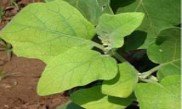 The leaves become yellow and the veins remain green. The leaves may also become brittle and curl up at the edges.
Sulphur Caps
Manganese
The leaves become yellow and the veins remain green. The leaves may also become brittle and curl up at the edges.
Sulphur Caps
Manganese
 The veins of middle to upper leaves of manganese-deficient plants appear green against the mottled pale green to yellow of the blade.
ALP
Copper
The veins of middle to upper leaves of manganese-deficient plants appear green against the mottled pale green to yellow of the blade.
ALP
Copper
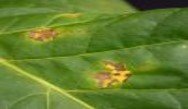 Copper deficiency in eggplant can result in stunted growth, discoloration of leaves and flowers, decreased crop yields, weakness in stems and roots, and chlorosis.
ALP
Copper deficiency in eggplant can result in stunted growth, discoloration of leaves and flowers, decreased crop yields, weakness in stems and roots, and chlorosis.
ALP
KEY FARMING POINTS
KEY FARMING POINTS
SOIL TYPE = Eggplants grow best in well-drained soil that is rich in organic matter.SOIL PH = The soil should have a pH between 5.5 and 6.5.CLIMATE / TEMPERATURE = Eggplants grow best in warm weather with temperatures between 21 to 29 degrees Celsius. They are sensitive to frost and cold temperatures.SEASON OF PLANTING = Eggplants are planted during the summer season, which is from March to June.SPACING = Eggplants should be spaced 18 to 24 inches apart in rows that are 30 to 36 inches apart.MANURING & FERTILIZATION = Fertilizers requirement depends on the fertility or quality of the soil.WATER MANAGEMENT = Eggplants require regular watering to keep the soil moist but not waterlogged. They should be watered deeply once a week or more often during hot, dry weather.HARVESTING DURATION = Eggplants are usually ready to harvest 65 to 80 days after planting. The fruit should be harvested when it is fully grown but before it becomes overripe and loses its shine.YIELD = The yield of eggplants depends on several factors such as the variety, growing conditions, and management practices.
NOTE:
Seed Treatment kit is optional.Bio-pesticides or Bio-fungicides can be applied on a preventive dosage or when any pest, fungal or bacterial diseases are identified.Recommended dosage on this crop schedule can vary depending on soil health, environmental conditions, and pest attacks.1-acre POORNIMA KIT contains: -NPK caps = 2 capsZinc caps = 1 capCropforce Nano Powder = 120gmHumigrow Nano Powder = 120 gmMycorrhiza nano powder = 100 gm
PRECAUTIONS: -
Biofertilizer is not a chemical fertilizer hence do not mix with agrochemicals.Do not expose to direct sunlight or heat.Use Bio-fertilizer before or after 3-4 days of use of chemical fertilizer.Please, clean the sprayer before the use of Bio-fertilizer or bio-pesticide.


